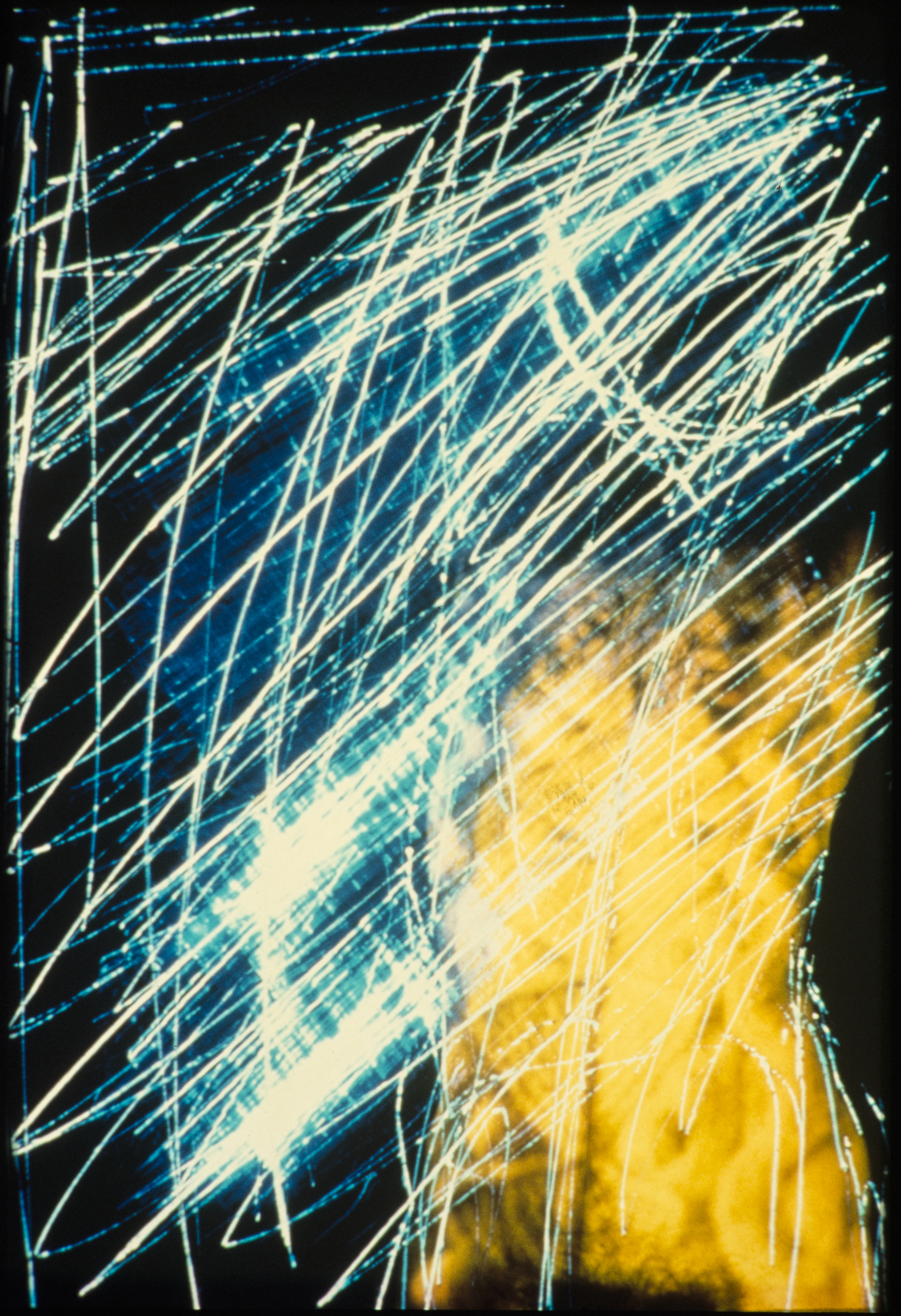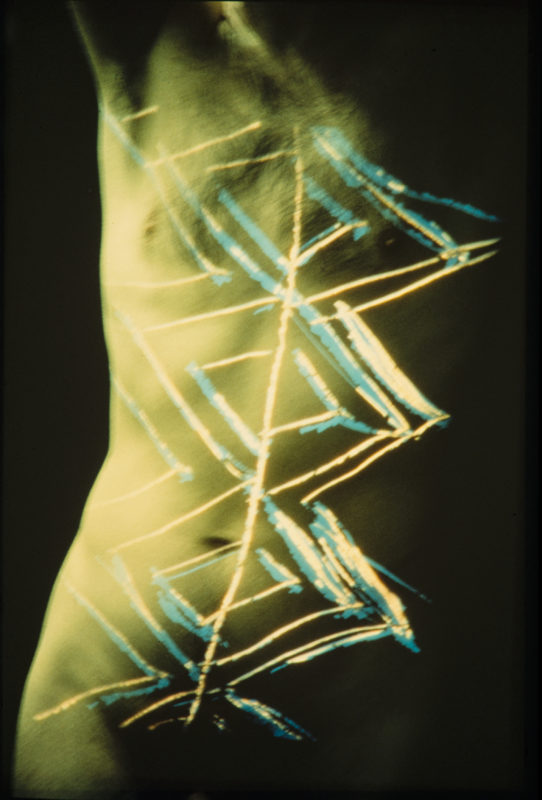Slide installation with sound, additional photographic images
Inis t’Oirr/Aran Dance is a 1985 work by Pauline Cummins. It is part of the IMMA Permanent Collection. Instead of avoiding the west of Ireland and the craft traditions of domestic life, Pauline Cummins’ slide and sound installation Inis t’Oirr/Aran Dance offers a different version of what they may mean. The title and the references to the Aran knitting tradition evoke the Aran Islands of the west coast of Ireland which were most celebrated for their life-style and language within Irish cultural nationalism. Yet here, women knit stories of the landscape, sexual desire and loving pleasure into their patterns. By exploring the terrain of the male body, the installation reverses the customary association of women and nature, landscape or Ireland itself. As Pauline Cummins narrates, the raised knots in the patterns ‘look like nipples’ but they ‘are like berries too or little houses set in walled fields’. She figures women as sexually active, desiring and creative, so that both the landscape and knitting can have very different connotations. Inis t’Oirr is so effective because it both draws on and disrupts the traditions of Irish cultural nationalism. Rather than reject the landscape or emblems of nationhood, Pauline Cummins’ re-appropriation of them is an exemplary feminist and postcolonial project in which cultural references are not tied to essential versions of gender or national identity. The deeply resonant symbolism of the west of Ireland and domestic craft is not dismissed because if its associations with limited notions of gender and national identity, but is deployed to express a very different version of cultural location and Irish womanhood.


The link between knitting and nurture grounds it in a loving and erotic relationship based on mutual care and trust rather than an exploitative pornographic one. The obvious relationship between the body portrayed and the voice describing it means that the male body is not objectified in Inis t’Oirr as the female had been for centuries in Western Art. Cummins shows that it is possible to represent the sexualized body without reducing it to a commodity and to further affirm this break with patriarchal tradition it was important to her that she used new media, slides and a taped voiceover instead of paint, to make her point. – Catherine Marshall, April 2002
